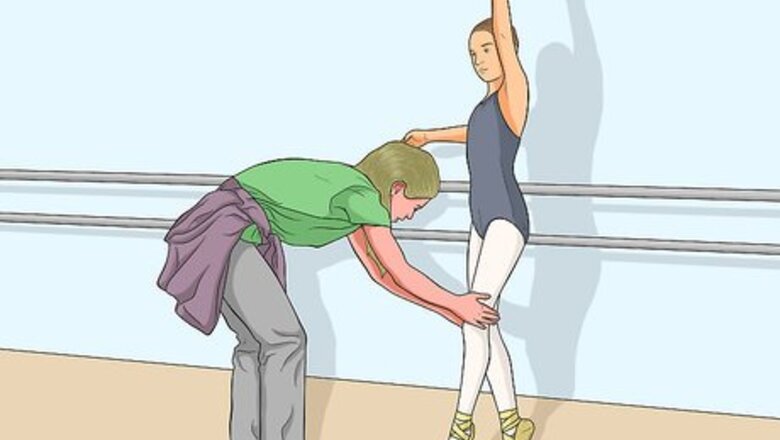
views
Gaining Sufficient Strength

Have your ballet instructor assess your current strength. You cannot try this unless you are strong enough to be en pointe. Listen to what your instructor has to say and do not attempt the en pointe work until he or she states that you are ready.
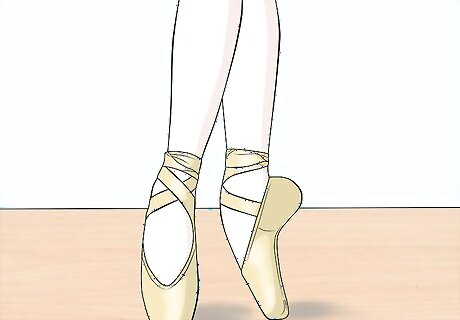
Develop the strength necessary for pointe work. The feet and ankles need to be strong, with the ability to control the joints in these areas being equally important. Rising to pointe and lowering back down depend on it. The ankles also need to be stable to support a sustained balance on your toes. Strong calf muscles are also required to pull off these skills. Each of these things can be achieved through the exercises done in ballet class. It also helps to have a solid core, which can be gained from ballet. Pilates is another excellent way to strengthen the core, if dancing itself isn't doing that for you.

Maintain a healthy weight. Being overweight while dancing on pointe could lead to health problems, because it puts too much pressure on the toes. You may damage your ankles or, even worse break or fracture them, which will mean that you will have to leave off training for a sufficient amount of time; weeks, maybe even months depending on the injury. Over that time, your strength, skill, and flexibility, for example, will have deteriorated. This can also mean that you will be back at square one and it will take you even longer to be able to stand on en pointe.
Perfecting Technique
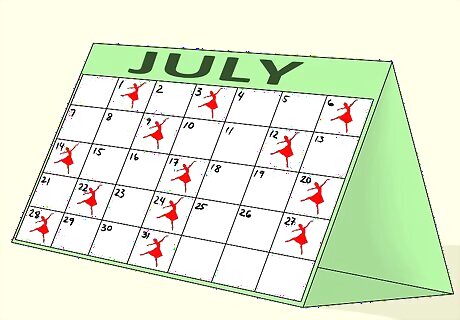
Take two to three classes per week. This will help to improve technique and learn as much as you can. Practice every step correctly, knowing it will transfer to your pointe work eventually. It's common to study ballet for at least two to three years in soft shoes before going on pointe.
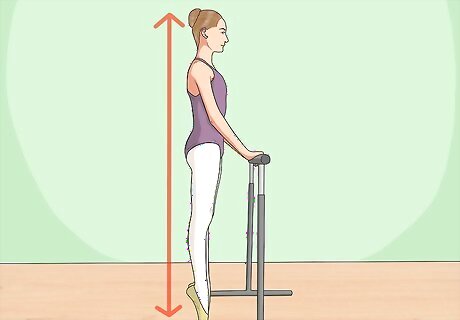
Learn proper alignment. This is the way the body parts are lined up over each other during movement. This is vital for being safe and avoiding injuries on pointe.
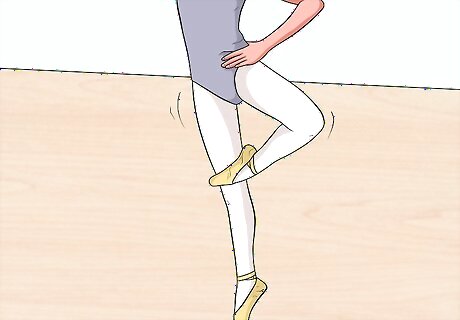
Focus on the ability to hold the turnout from your hips while carrying out every step.
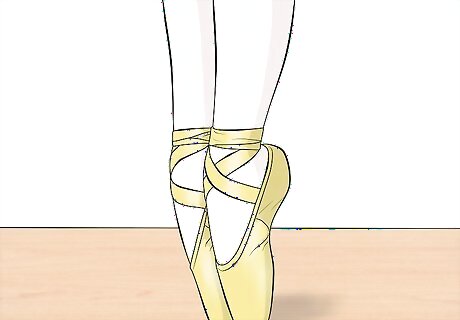
Ensure that you have strong releves. The releve must include the ability to balance on demi pointe while keeping the ankles still. This ability is extremely important.
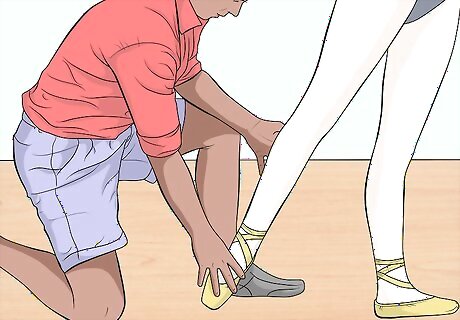
Seek guidance. Speak to a knowledgeable and trusted source, such as your ballet teacher. Ask them what you personally need to do to reach your goal of being on pointe. Let him or her know that you're serious about it.
Going en Pointe
Learn under the guidance of your instructor. The following must be done under instruction and in the presence of your dance teacher. Do not attempt to go en pointe without qualified assistance.
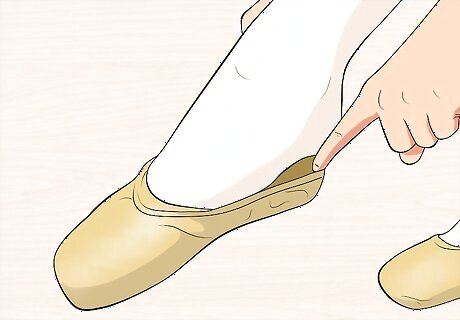
Put on your pointe shoes. The shoes should have been properly prepared beforehand, with the ribbons and elastic attached as required. Once you have the shoes on, make sure that the elastic and ribbons are properly attached to your legs. Ensure that your dance instructor has approved the shoes before using them. The block end of the shoe is known as the box or the block. It is this end that you will be standing on.
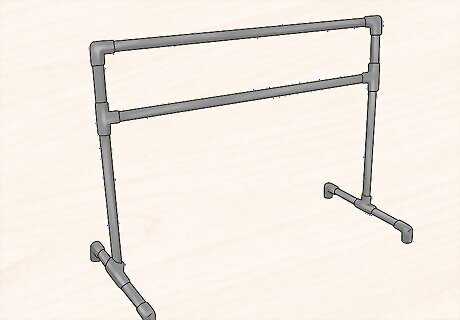
Go over to the barre (or a secure table or counter of about the same height).
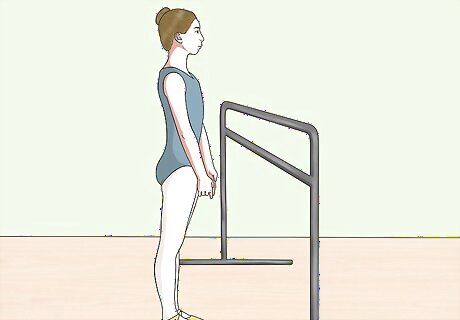
Stand in first position. Remember your turnout. This is very important in preventing injuries and becoming stronger in dance. Maintain the correct ballet posture - open chest, pulled back shoulders, etc. Try to "lift" out of your hips and towards the ceiling, don't relax into that position.
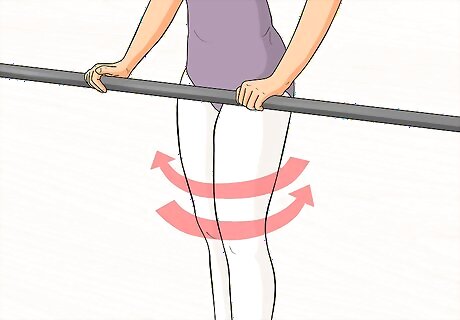
Get ready to stand on pointe. Squeeze your legs together as tightly as you can. Pretend there is a dollar bill between your thighs and you don't want to drop it.
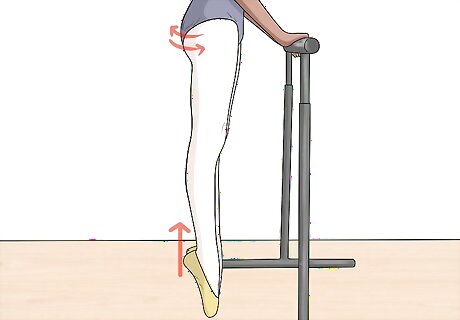
Use your core and butt muscles to "lift out" of your shoes. Start to do a relevé, and stop once you are on demi-pointe. Now is when the fun starts: Squeeze your butt as if your life depends on it to get en pointe. When you go up, go up all the way up onto the box. If you don't, you can seriously injure your ankles because of the extra strain it puts on them.
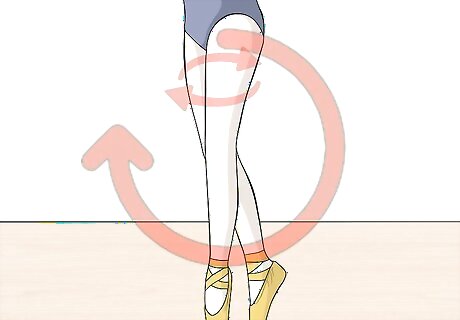
Continue to squeeze as you stay en pointe.
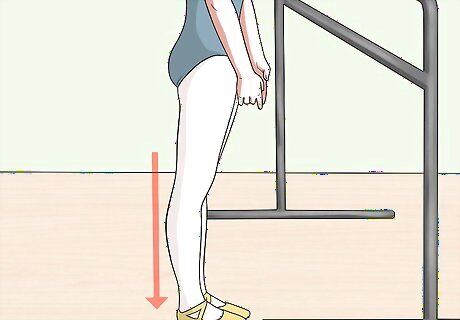
Come down. Once you are ready to come down, squeeze your butt even more to control the way you come down. This is a relevé.
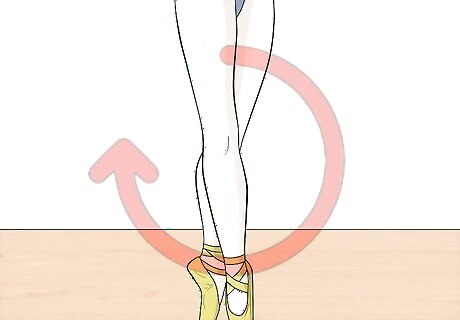
Continue to do the relevés to build up your leg and butt strength.
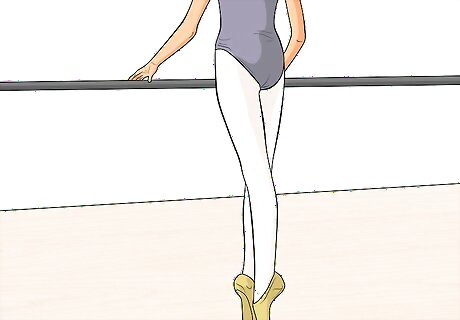
Practice. Once you are pretty strong in your legs, you will (most likely) be able to do some fun, sassy walks on pointe. Once you're confident and comfortable with the basics, you'll enjoy doing the moves from "center stage"––as long as you are prepared enough to do so!














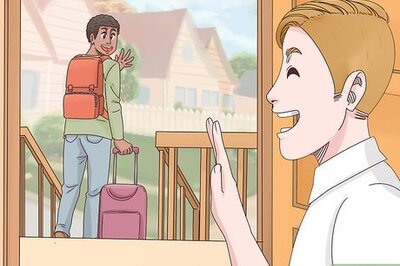



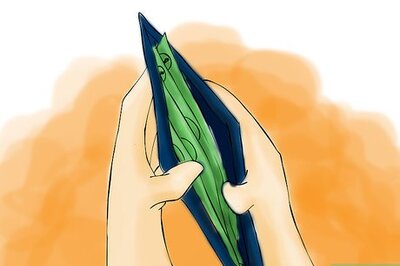
Comments
0 comment